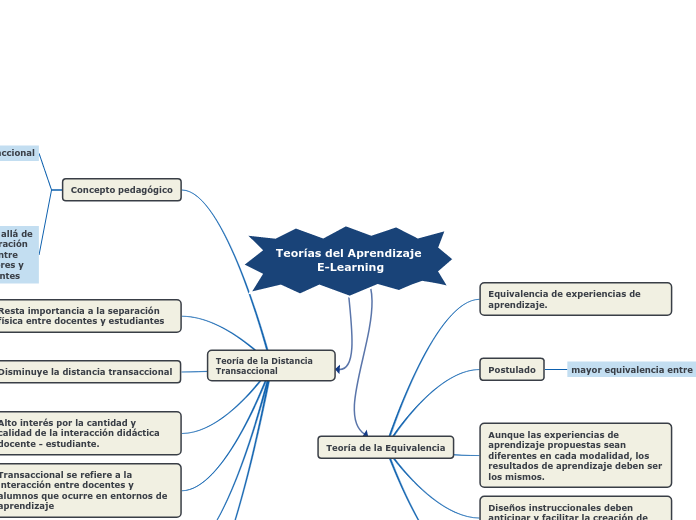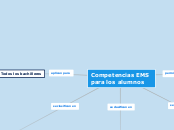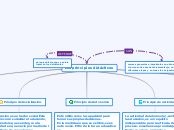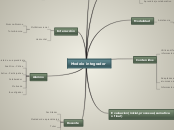Topic flotante
Referencias:
- Moore, M. (1990). Recent contributions to the theory of distance education. Open Learning: The Journal of Open, Distance and e-Learning, 5:3, 10-15, DOI: 10.1080/0268051900050303
- Simonson, M., Schlosser, C. and Hanson, D. (1999). Theory and Distance Education: A New Discussion. Documento en línea, Recuperado el 14/01/2020 del sitio https://www.tandfonline.com/doi/abs/10.1080/08923649909527014
Teoría de la Equivalencia
Categoría de resultados afectivos, propios de los estudiantes, relacionados con lo que ellos esperaban alcanzar con su participación en el curso.
Tornadoes are the most violent storms on Earth
Watch the video then type in a short explanation of how the tornadoes are formed.
Diseños instruccionales deben anticipar y facilitar la creación de experiencias
The classification system for tornadoes is called The Fujita Scale (or F scale), and it's an F0 to F6 categorization of the tornado's intensity.
Each category expresses the intensity in miles per hour.
Example: category F0 (40–72 mph; includes damages to trees, chimneys, and billboards).
Type in the other 5 categories.
Aunque las experiencias de aprendizaje propuestas sean diferentes en cada modalidad, los resultados de aprendizaje deben ser los mismos.
Tornadoes can occur almost all over the world, but US's unique geography makes it the ideal place for their development.
Type in the tornado seasons in the United States, taking into account the
Southeast and Northern Plains regions.
Postulado
Which are the areas/countries of the world hit most frequently or severely by tornadoes? Choose from the options below or add your own.
North AmericaEuropeSouth AfricaPhilipppinesBangladeshNew ZealandSouth AmericaCanadaOther
mayor equivalencia entre
los resultados de los aprendizajes para todos los aprendices.
Experiencias de aprendizaje de los estudiantes a distancia y los estudiantes locales (presenciales).
Equivalencia de experiencias de aprendizaje.
Tornadoes are local storms of short duration (this ranges between 5 and 10 minutes) formed of winds that rotate at very high speeds, usually in a counter-clockwise direction.
A tornado's characteristics:
- Time of day: they usually occur in the afternoon (3 - 7 PM)
- Direction: usually from southwest to northeast
- Length of path: this is the distance it travels; the average is 4 miles, but it could also travel around 300 miles.
- Width of path: averages between 300 and 400 yards but tornadoes have cut paths a mile or more in width.
- Speed of travel: though speeds of 68 mph have been reported, the average speed is somewhere between 25 and 40 mph.
- Cloud: dark cumulonimbus (thunderstorm cloud) from which the funnel-shaped pendant extends to the ground.
- Precipitation: rain and hail before the tornado hits and heavy downpour to the side of the tornado's path.
- Sound: roaring, rushing noise.
Teoría de la Distancia Transaccional
Planificar experiencias de aprendizaje que promuevan el trabajo autónomo de los estudiantes
La distancia transaccional no es solamente espacial o geográfica sino también pedagógica y psicológica.
Transaccional se refiere a la interacción entre docentes y alumnos que ocurre en entornos de aprendizaje
Alto interés por la cantidad y calidad de la interacción didáctica docente - estudiante.
Type in the two official seasons from the Atlantic and Pacific.
Disminuye la distancia transaccional
Hurricanes that have been known throughout history
Aumenta diálogo interactivo
Resta importancia a la separación física entre docentes y estudiantes
Which are the areas/countries of the world hit most frequently or severely by hurricanes? Choose from the options below or add your own.
ChinaPhilippinesGrand CaymanJapanAustraliaUnited StatesCaribbeanMexicoTaiwanVietnamAtlantic CoastOther
Concepto pedagógico
Hurricanes are the most violent, swirling storms on Earth, with winds that can go up to 259 kilometers per hour.
A hurricane's forming elements:
- Eye- the "hole" at the center of the storm where the winds are lighter and the skies are only partly cloudy
- Eye wall- the ring of thunderstorms that are swirling around the eye. This is where the winds are the strongest and rain the heaviest.
- Rain bands -that expand from the eye wall
va más allá de la separación física entre profesores y estudiantes
Distancia transaccional
Tres variables
Autonomía
dispone el estudiante
Diálogo
entre profesor y alumno
Estructura
diseño de los cursos
Teorías del Aprendizaje E-Learning
Learn more about hurricanes and tornadoes, the areas of the world they affect, how they are formed and when, and what you can do to survive such an extreme storm.









